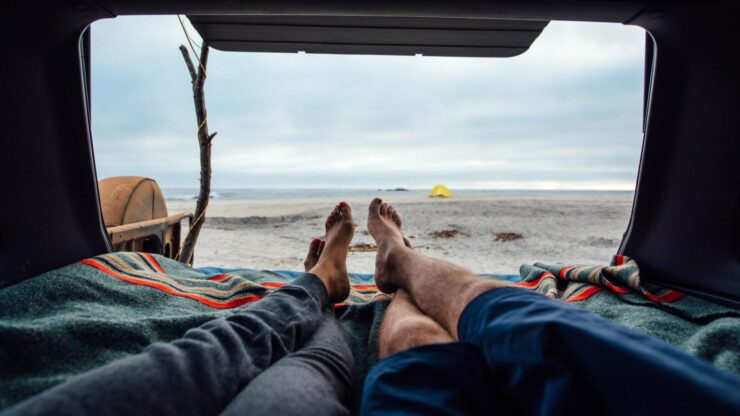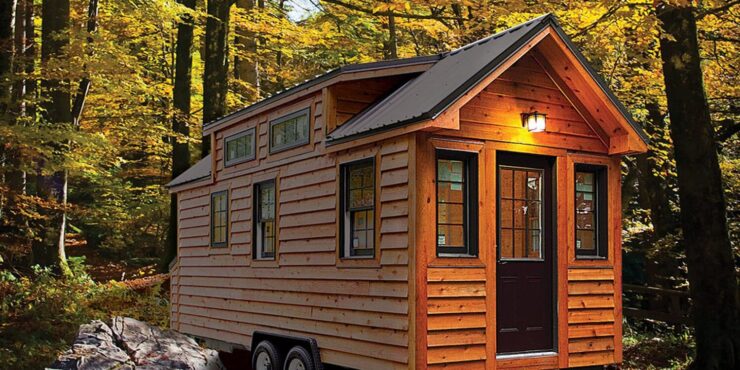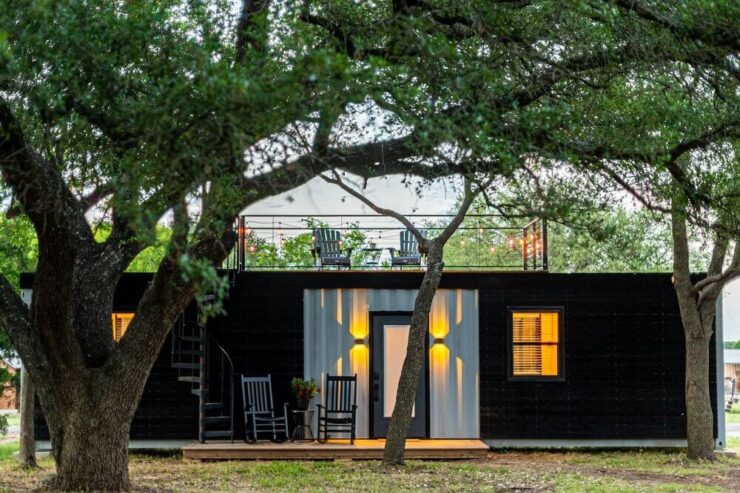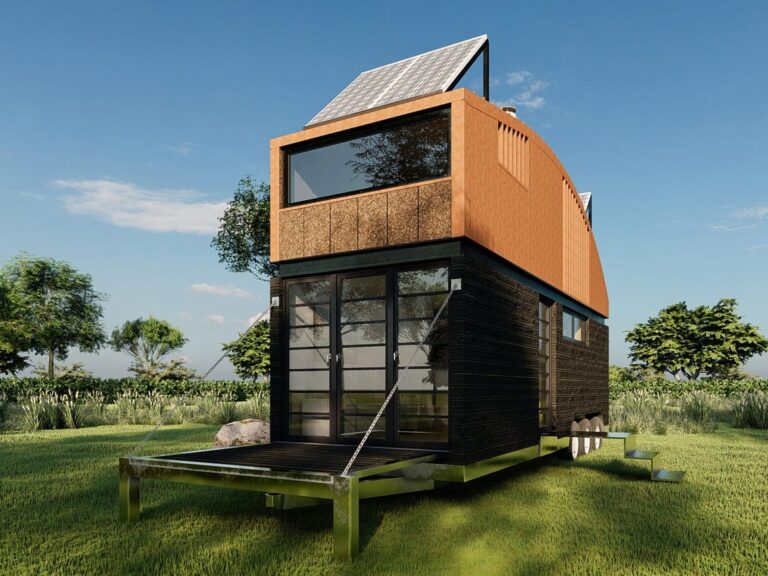Imagine the freedom of taking the comforts of home with you wherever you roam. In the pursuit of this dream, more and more people are turning to an unconventional yet liberating lifestyle — life in a small, portable dwelling, also known as a tiny home on wheels.
Financial Freedom: Discovering the Cost-Effective Lifestyle of Tiny Living
One of the immediate attractions of adopting this unconventional lifestyle is the financial freedom it offers. Those who search for tiny homes for sale are often surprised to find the degree to which their economic circumstances improve. As a matter of fact, one of the most appealing aspects of tiny living is its reduced costs which you can be assured of at buyasmallhouse.com. The price tag of such a dwelling is generally a fraction of that of a traditional home.
Furthermore, living with a reduced footprint often means a decrease in utilities, repairs, and other home-related expenses. Less square footage equates to less electricity, less water usage, less space to heat or cool, and thus, less money spent on maintaining the comforts of home. It’s not merely a shift in dwelling—it’s a full-fledged financial strategy.
Mobility and Adventure: Embracing the Freedom of Life on the Road

There’s a unique sense of liberation that comes with a home that’s not bound by traditional geographical ties. For those bitten by the wanderlust bug, this mode of living provides an unrivaled advantage: the ability to venture to new locations as the heart desires.
This nomadic lifestyle opens up a world of opportunities, allowing you to wake up to a different scenic view each morning if you so choose. From the sandy beaches of California to the rugged mountains of Colorado, your backyard is as changeable as your imagination.
Sustainable Living: Reducing Your Environmental Footprint
Beyond the undeniable financial and travel benefits, mobile micro-living also presents an opportunity to embrace a more sustainable lifestyle. A tiny home on wheels requires fewer resources to build and maintain than a conventional house. The downsizing associated with tiny living forces a reduction in energy consumption, water usage, and waste output, resulting in a significantly lower environmental footprint.
Moreover, many of these petite domiciles are designed with renewable energy sources like solar panels and rainwater harvesting systems. This sustainable aspect of tiny living not only minimizes harm to our planet but also leads to a heightened consciousness about the resources we use daily.
Minimalism and Simplification: Embracing a Clutter-Free Existence
The shift to a tiny home on wheels often necessitates a reevaluation of one’s possessions. It pushes people to rethink their needs, wants, and luxuries. It invites one to embrace a minimalist lifestyle, letting go of excess and focusing on what truly brings joy and utility.
Clearing out clutter and ridding oneself of unnecessary items can lead to a profound sense of mental and emotional freedom. It’s about getting rid of the superfluous to make room for what matters, a practice that can lead to increased satisfaction and happiness.
Flexibility and Versatility: Adapting to Changing Circumstances with Ease

Living small doesn’t mean you compromise on comfort or style. These compact abodes are often impressively versatile, with furniture that folds away or serves multiple purposes, and storage solutions ingeniously integrated into the design.
This flexibility extends beyond the physical space, enabling residents to adapt quickly to life’s unpredictable changes. Whether it’s a job relocation, a desire for new scenery, or a life-changing event, these nimble homes offer ease of transition that stationary dwellings simply cannot.
Community and Connection: Building Strong Relationships in the Micro-Living Community
Another enchanting facet of this lifestyle is the sense of community it fosters. Those who choose this unconventional path often find themselves part of a tight-knit group of like-minded individuals, sharing tips, support, and friendship. This micro-living community celebrates diversity, values shared experiences and creates a global network of people connected by their common pursuit of simplicity, freedom, and adventure.
Creativity and Design: Exploring Innovative Solutions for Small Space Living
This lifestyle also opens up a world of creative possibilities. Since space is at a premium, it pushes designers and owners to come up with innovative and imaginative solutions to fit all the comforts of home into a compact space.
High ceilings, lofted beds, collapsible furniture, and multi-purpose appliances — are just a few examples of how these compact dwellings push the boundaries of design and functionality. Living in such a space can inspire a new appreciation for creative problem-solving and innovative design.
Self-Sufficiency: Cultivating Independence through Off-Grid Living

Many tiny homes on wheels are built with off-grid capabilities, such as solar panels and composting toilets. This not only reduces their environmental impact but also fosters a sense of self-reliance and independence. The knowledge and skills gained from maintaining these systems can be empowering, giving you more control over your resources and instilling a sense of satisfaction that comes from self-sufficiency.
How to choose the right tiny house for you
Choosing the perfect tiny house for you is a personal journey that should be dictated by your unique lifestyle and needs. Here are some crucial considerations to guide you on your way.
- Identify Your Needs: Understand what’s essential for your comfort and daily activities. Do you require a full kitchen, or will a basic one suffice? Is a large bed crucial, or can you manage with a loft? Do you work from home and need a dedicated workspace? Answering such questions will help clarify your priorities.
- Assess Your Mobility Requirements: If you plan to move frequently, a lighter, more compact model is recommended. However, if you plan to stay in one place for extended periods, you might opt for a larger, more amenity-rich design.
- Consider the Climate: The climate of your intended location will dictate specific design features. For instance, a tiny house destined for colder climes might require better insulation and double-glazed windows.
- Budget Wisely: Tiny houses can range from DIY budget builds to luxurious designer models. Determine your budget, keeping in mind additional costs like trailer maintenance, insurance, and off-grid systems.
Remember, the best tiny house for you is the one that meets your needs, aligns with your budget, and makes you feel at home, no matter where you are.
Conclusion

The shift to a mobile micro-home is not merely about reducing one’s living space. It’s an adventure that paves the way toward financial freedom, environmental sustainability, and self-sufficiency while encouraging minimalism, flexibility, and creativity. It’s a path less traveled, but one that leads to a life of unexpected rewards and profound simplicity. If you’ve been yearning for a lifestyle change that brings a breath of fresh air, a tiny home on wheels might just be your answer.

